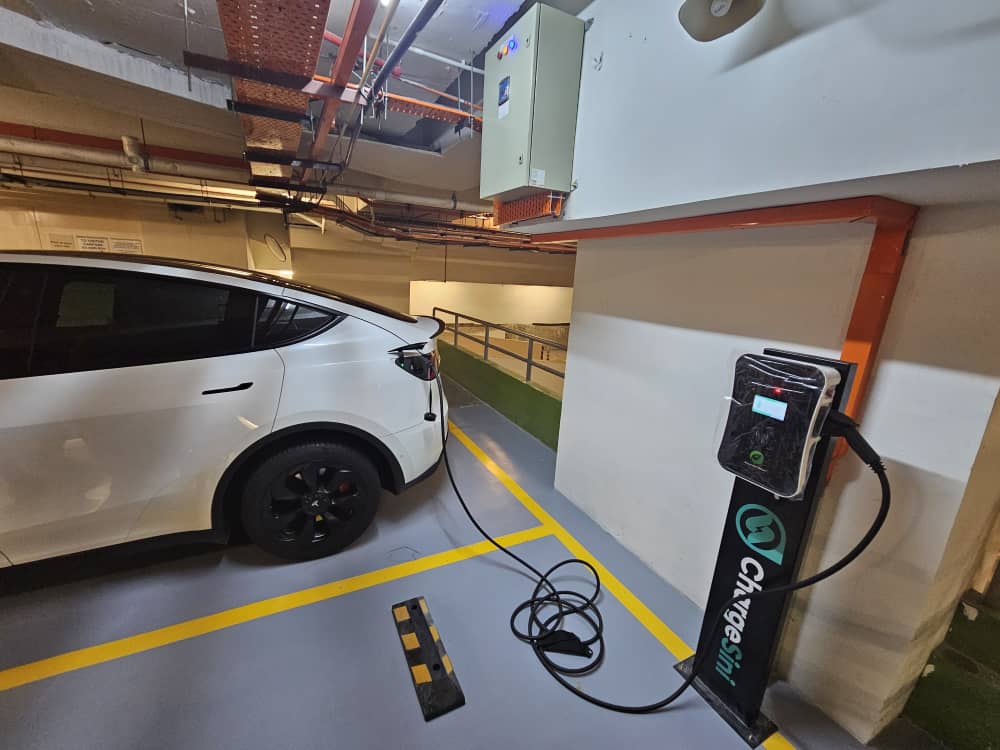-
By Jessica Phung
- 0 Comments
What Tesla’s foray into M’sia may mean for our local EV industry & charging infrastructure
Tesla’s brand recognition does increase awareness and interest in EVs among Malaysians. At the same time, it leads to increasing competition among automakers and perhaps lowering the prices of EVs in Malaysia by offering just RM199,000 for Tesla’s Model Y (455km range). As a comparison, ChargeSini highlighted that the Hyundai Ioniq 5 is priced at RM270,408 (for the 430km range), while the BMW iX xDrive40 RM403,800 (425km range).
How Do Local Chargers Stack Up, Though?
With those requirements in mind, it means that Tesla’s charging stations might come to compete with local players’ EV chargers. However, we don’t think they’re in direct competition with Tesla, as their target demographics are very different in terms of customer group, area, and the kinds of facilities.
Let’s say for condominiums and hotels, where we see the EV owners might leave their EV to charge overnight, we provide AC chargers, in this case, to better maintain their EV batteries. Moreover, ChargeSini has programmed its chargers with something called the Open Charge Point Protocol (OCPP) software language.

Through the protocol, ChargeSini can operate the parking lock in ChargeSini charging stations:
which unlock when EVs are charging, lock up to prevent hogging and prevent stealing electricity, and charge idle fees if users are not moving their EV after charging and blocking other EV drivers from using the charger.
In any case, Tesla has only announced 10 stations in Malaysia at the time of writing, with only one station launched in Pavilion KL.
Fore full article, click to read 👉
What Tesla’s foray into M’sia may mean for our local EV industry & charging infrastructure

